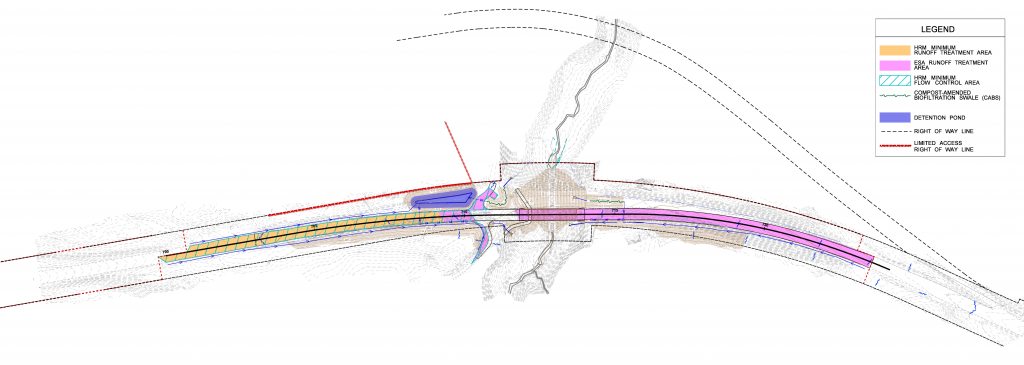The stormwater industry is abuzz with how to respond to 6PPD-quinone, a chemical used to prevent degradation of car tires, which is adversely impacting our natural environment. If you are working on a roadway improvement project, you might be triggering an Endangered Species Act (ESA) consultation to ensure aquatic environments are protected from roadway runoff. Osborn Consulting has provided ESA programmatic consultation on over 10 projects, including a recent WSDOT project that involved siting 70 new stormwater facilities to treat contaminated runoff from approximately 26 acres of highway pavement before it enters our local streams and waterways.
On our projects, we walk through each permitting and manual requirement, discuss with the larger team what might be triggered through design iterations, and help inform decisions with roadway engineers on how to be the most effective with the design. Osborn Consulting team members developed a clear process to guide these conversations, based on the many roadway and environmental requirements highway projects must adhere to. It is vital that the stormwater solutions are fully vetted with the roadway designers and clients to foster a shared understanding of these complex requirements and develop a thoughtful path forward. Our goal is to balance opportunities to improve and protect our environment while staying cognizant of budget and funding limitations.
Developing stormwater best management practices (BMPs) for highway and road projects requires a diligent commitment to teamwork and collaboration between stormwater engineers and environmental permitting staff, transportation/traffic engineers, geotechnical engineers, stream designers, biologists, and more. As our entire industry strives to balance environmental protection with cost effective solutions for our clients, the Osborn Consulting team’s creative ideas and collaborative approach ensure our projects are forward-thinking, yet practical and achievable.
It was not until recently that 6PPD-quinone was determined to be a primary cause of the depleting coho salmon population. While current requirements do not to provide removal of 6PPD-quinone, by providing more treatment than required to meet code compliance and using high treatment performing BMPs to the maximum extent feasible, we can provide an interim solution to this environmental concern.







